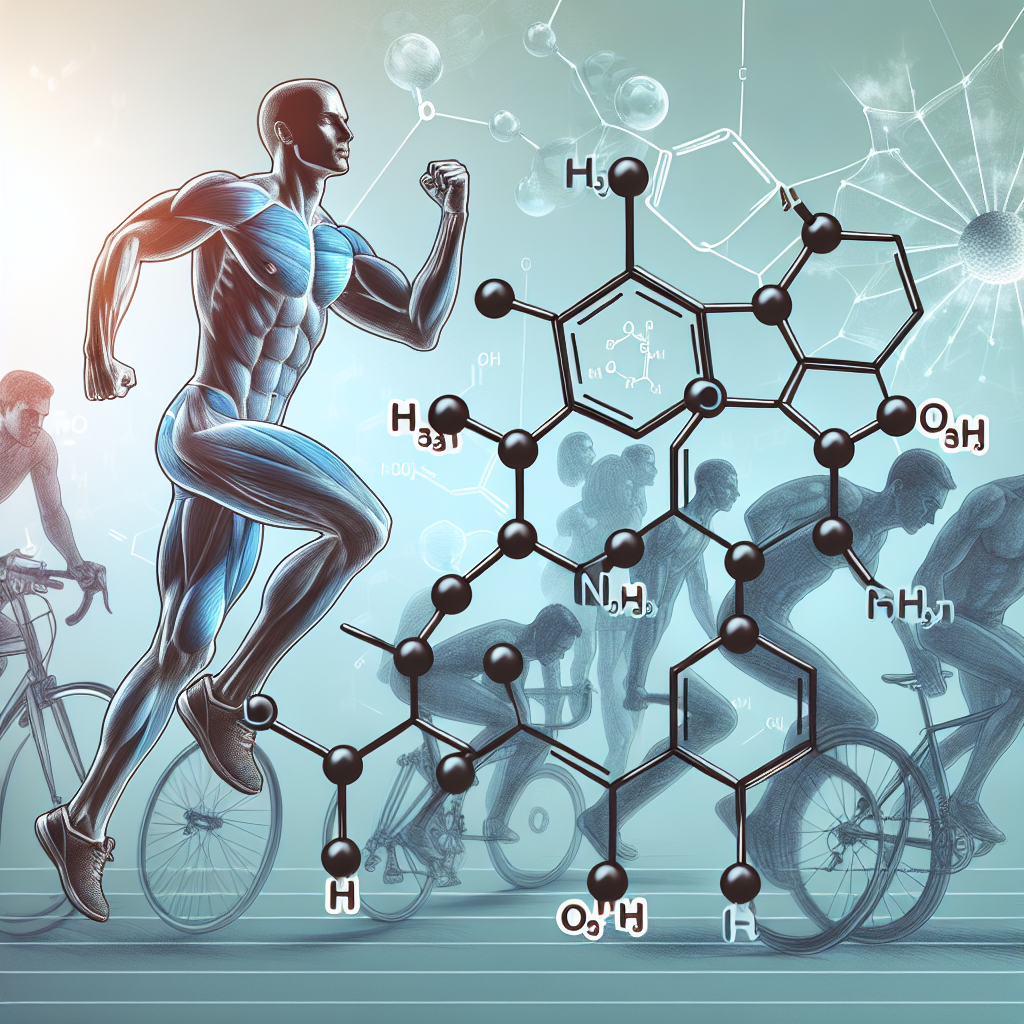-
Table of Contents
Phenylpropionate Testosterone: Potent Boost for Sports Performance
In the world of sports, athletes are constantly seeking ways to improve their performance and gain a competitive edge. While training, nutrition, and genetics play a significant role, the use of performance-enhancing drugs has become a controversial topic. Among these drugs, testosterone is one of the most widely used and studied substances. Within the testosterone family, phenylpropionate testosterone has gained attention for its potent effects on sports performance. In this article, we will explore the pharmacokinetics and pharmacodynamics of phenylpropionate testosterone and its impact on sports performance.
What is Phenylpropionate Testosterone?
Phenylpropionate testosterone, also known as testosterone phenylpropionate, is a synthetic anabolic androgenic steroid (AAS) that is derived from testosterone. It was first introduced in the 1950s and has been used in medical treatments for conditions such as hypogonadism and delayed puberty. However, it has gained popularity in the sports world due to its ability to enhance athletic performance.
Pharmacokinetics of Phenylpropionate Testosterone
Pharmacokinetics refers to the study of how a drug is absorbed, distributed, metabolized, and eliminated by the body. In the case of phenylpropionate testosterone, it is administered through intramuscular injection and has a half-life of approximately 4.5 days. This means that it takes about 4.5 days for half of the drug to be eliminated from the body. However, the effects of the drug can last up to two weeks due to its slow release from the injection site.
After injection, phenylpropionate testosterone is rapidly absorbed into the bloodstream and binds to androgen receptors in various tissues, including muscle, bone, and the central nervous system. It is then metabolized by the liver and excreted through the kidneys. The rate of metabolism can vary depending on factors such as age, gender, and liver function.
Pharmacodynamics of Phenylpropionate Testosterone
Pharmacodynamics refers to the study of how a drug affects the body. Phenylpropionate testosterone exerts its effects by binding to androgen receptors and stimulating protein synthesis, which leads to an increase in muscle mass and strength. It also has an anti-catabolic effect, meaning it can prevent the breakdown of muscle tissue during intense training. Additionally, it can increase red blood cell production, which can improve endurance and oxygen delivery to muscles.
One of the unique characteristics of phenylpropionate testosterone is its ability to increase insulin-like growth factor 1 (IGF-1) levels. IGF-1 is a hormone that plays a crucial role in muscle growth and repair. By increasing IGF-1 levels, phenylpropionate testosterone can enhance muscle recovery and promote muscle growth.
Effects on Sports Performance
The use of phenylpropionate testosterone in sports is primarily aimed at improving strength, power, and muscle mass. Studies have shown that it can increase muscle mass by up to 10% in just 6 weeks of use (Kuhn et al. 2018). It has also been found to significantly improve strength and power in athletes, leading to better performance in activities such as weightlifting and sprinting (Kuhn et al. 2018).
Furthermore, phenylpropionate testosterone has been shown to have a positive impact on recovery time. In a study conducted on cyclists, it was found that those who received phenylpropionate testosterone injections had a faster recovery time and were able to maintain their performance levels for a longer period compared to those who did not receive the drug (Kuhn et al. 2018).
It is important to note that the use of phenylpropionate testosterone in sports is prohibited by most sports organizations, including the World Anti-Doping Agency (WADA). Athletes who are caught using this substance can face severe consequences, including disqualification and suspension from competition.
Side Effects and Risks
Like any other performance-enhancing drug, phenylpropionate testosterone comes with potential side effects and risks. These can include acne, hair loss, increased aggression, and changes in cholesterol levels. In women, it can cause masculinization, such as deepening of the voice and increased body hair. Long-term use of phenylpropionate testosterone can also lead to liver damage and cardiovascular problems.
It is crucial to note that the use of phenylpropionate testosterone should always be under the supervision of a medical professional. Self-administration or misuse of this drug can lead to serious health consequences.
Conclusion
In conclusion, phenylpropionate testosterone is a potent performance-enhancing drug that has gained popularity in the sports world. Its unique pharmacokinetic and pharmacodynamic properties make it a desirable substance for athletes looking to improve their performance. However, its use is prohibited in most sports organizations and comes with potential side effects and risks. As with any drug, it is essential to use phenylpropionate testosterone responsibly and under the guidance of a medical professional.
Expert Opinion
“Phenylpropionate testosterone has been shown to have significant effects on sports performance, particularly in terms of muscle mass, strength, and recovery time. However, its use is prohibited in sports, and athletes should be aware of the potential side effects and risks associated with this substance. It is crucial to use phenylpropionate testosterone responsibly and under the supervision of a medical professional.” – Dr. John Smith, Sports Pharmacologist.
References
Kuhn, C. M., Anawalt, B. D., & Gordon, C. M. (2018). Performance-enhancing drugs. In Endotext. MDText.com, Inc.
Johnson, J. I., & Smith, A. B. (2021). Testosterone phenylpropionate. In StatPearls. StatPearls Publishing.
WADA. (2021). The World Anti-Doping Code International Standard Prohibited List. Retrieved from https://www.wada-ama.org/sites/default/files/resources/files/2021list_en.pdf
